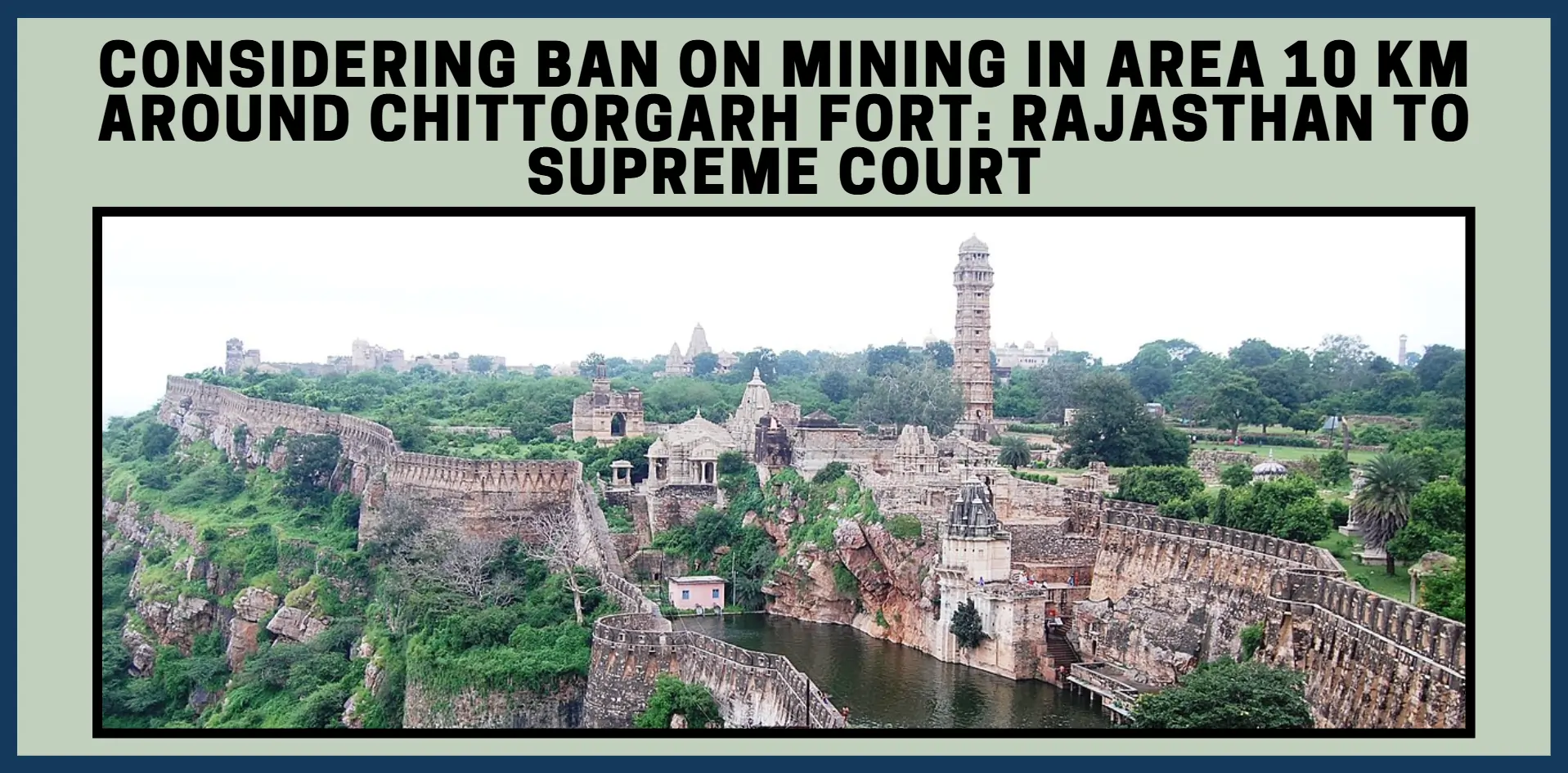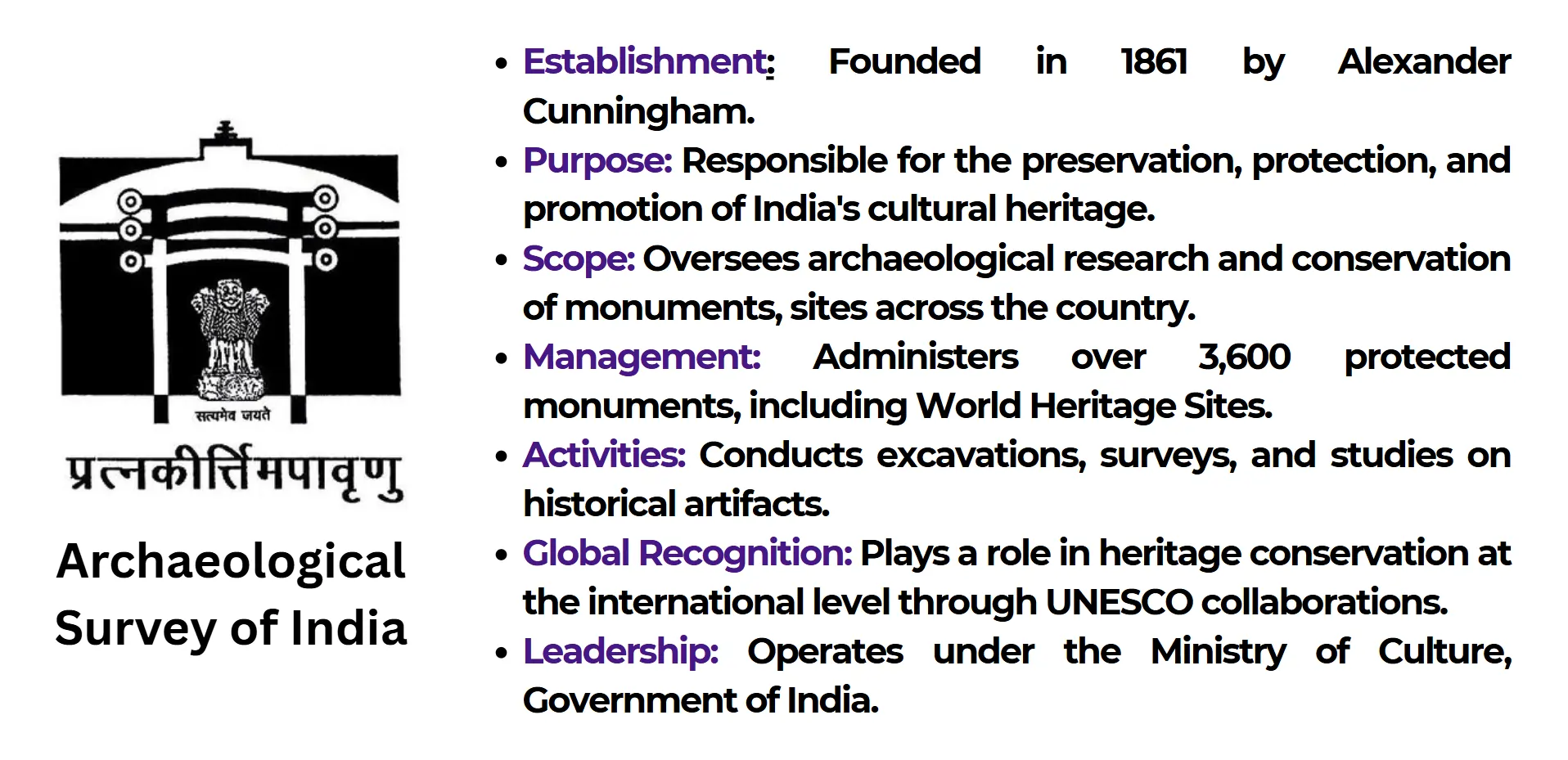The issue stems from a protracted legal dispute over mining operations close to the Fort between Birla Corporation Limited and the State of Rajasthan and others.

Chittorgarh Fort, a UNESCO World Heritage site, stands as a testament to Rajasthan's rich history and architectural splendour. Great threats challenge the magnificent beauty of this location because of nearby mining operations. A recent governmental initiative in Rajasthan seeks to implement a 10-kilometer mining ban zone around the fort which demands society to weigh cultural heritage protection against economic activities. The Supreme Court has become involved with this legal and environmental dispute which primarily focuses on structural safety and environmental responsibility of the fort.
Historical and Cultural Significance of Chittorgarh Fort
Chittorgarh Fort, an inspiring symbol of Rajput valour and sacrifice, stands as a majestic sentinel of Indian heritage. The site maintains its prestigious status by conveying tales alongside its magnificent design which spans multiple centuries.
A Magnificent Architectural Marvel
One of India's biggest fortification complexes takes residence at the top of a hill covering 700 acres of land. During the 7th century the Mauryan dynasty began building the fort which the Sisodia Rajputs later expanded through time. Large defensive walls protect the fort which boasts seven gates that combine defensive capabilities with artistic value. The architectural brilliance of ancient Indian civilization is displayed through various architectural features found inside the fort such as palaces, temples, reservoirs and towers.
Symbol of Rajput Valour and Sacrifice
A series of valorous events along with heroic stories and resisting battles connect to this historic site. The fort resisted three serious attempts at capture that were led by Alauddin Khilji and then Bahadur Shah before the Mughal Emperor Akbar tried to seize it. During each defensive stand the garrison members opted death rather than surrendering their honour. Chittorgarh Fort exists as a powerful symbol of Rajput valour because of the heroic Jauhar of “Rani Padmini” and the victorious battles which took place there.
Cultural Epicentre of Rajasthan
This cultural landmark has been nurtured for many generations as it helped define the cultural foundation of Rajasthan. The temple complex of Chittorgarh fort houses both Meera Bai Temple and Kalika Mata Temple which showcase religious devotion together with ceremonial crafts. Meera Mahotsav along with other festivals at the fort creates cultural energy which draws tourists and pilgrims from worldwide audiences.
UNESCO Recognition and Global Legacy
The decision makers at UNESCO announced the inclusion of Chittorgarh Fort among their World Heritage Sites when they selected it for the “Hill Forts of Rajasthan” group in 2013. The recognition values the fortress for its cultural significance in addition to its historical importance through its status as a universal heritage site. The preservation work at this site safeguards ancient historical stories of India which creates both respect for foreign visitors and patriotism for domestic residents.

Tourism and Regional Significance
Tourists who visit this site benefit not only the local history but also support the regional economy since they number in the millions each year. Tourists enter Rajasthan through this location to experience royal historical tales intertwined with natural landscapes.
Chittorgarh Fort represents a vivid demonstration of Indian historical depth and showcases India's cultural achievements and inspirational survival through generations. Protecting this site constitutes the key requirement to keep its heritage alive for future generations.
The Legal Battle
A legal framework arose regarding mining prohibition in the proximity of Chittorgarh Fort because it generated discord between preserving natural history and safeguarding the environment against development.
- Initiation of Legal Proceedings:The legal dialogue regarding Chittorgarh Fort mining emerged because of mounting worries about how this activity affected the fortress. The Rajasthan High Court made a decision during 2012 to prohibit mining operations around Chittorgarh Fort inside a 10-kilometer protected zone because the site maintained its status as a UNESCO World Heritage destination. The conservation world received the ruling positively despite mining companies along with local communities whose main source of income was from mining operations objecting to the decision.
- Involvement of Key Stakeholders: Birla Corporation Limited led the opposition against the High Court ruling by debating its economic impact and scientific value of the mining prohibition. The court cases reached the Supreme Court where different parties submitted their evidence to the judiciary. Three expert organizations including ASI and CBRI with GSI membership offered professional insight about active threats against the fort structures.
- Supreme Court’s Directives: The Supreme Court issued a mandate to IIT-ISM Dhanbad for carrying out scientific research on mining repercussions. The scientific report claimed that controlled blasting at distances exceeding 5 kilometres would not lead to major threats to the region yet researchers questioned these findings due to experimental weaknesses and lacking longitudinal studies. Although the court proceedings took place the need for stabilizing development against heritage preservation emerged clearly.
- Rajasthan Government’s Stand: The Rajasthan government has shown clear interest in implementing a mining ban which accords with their conservation policies. The on-going legal development stands as a key turning point for establishing national policies about cultural conservation against industrial advancement.
Environmental and Structural Concerns
Mining activities near Chittorgarh Fort have raised severe environmental concerns plus stability threats to the fort that need immediate intervention.
Impact on Structural Integrity
Normal architectural elements in Chittorgarh Fort consisting of intricate design elements suffer severe damage through ground vibrations that stem from mining operations. Mining blasts during operations produce ground-moving shockwaves which create a serious danger to both the fort's subsurface supports and its existing architectural weakness. Due to Constant vibration the fort suffers irreversible damage and its historical significance is also threatened.
Environmental Degradation
Environmental destruction in the area surrounding Chittorgarh Fort occurs because of the widespread mining operations in the region. Research indicates that contaminants discharged into the Gambhiri and Bedach rivers have damaged the water environment affecting aquatic creatures and water purity. Particulate matter together with mining operation dust forms a dangerous air contamination that endangers nearby residential communities. The mine sites create environmental disturbances which force the movement of distinctive species that originally inhabited this region.
Violation of Environmental Regulations
The mining industry faces multiple legal environmental violations that involve breaking the Water (Prevention and Control of Pollution) Act 1974 regulations. The urgent need for tougher enforcement of regulations becomes evident through these violations which threaten to disrupt the natural ecological equilibrium surrounding the fort.
Call for Sustainable Practices
The solution proposed by experts involves developing mining practices which reduce both environmental destruction and structural harm in the region. The sustainable harmony between preservation and industrial activities at the fort depends on well-regulated blasting practices, waste management strategies and consistent monitoring of its condition.
The environmental and structural challenges surrounding Chittorgarh Fort mining operations demonstrate the critical necessity of developing comprehensive planning methods which unify heritage defence with sustainable growth.
Scientific Studies and Criticism
Multiple scientific assessments throughout different regions surrounding Chittorgarh Fort created essential findings about the mining operations. Scientific studies about mining near Chittorgarh Fort have been extensively evaluated because methods used in research together with end results need additional investigation.
IIT-ISM Dhanbad Report
The Supreme Court ordered IIT-ISM Dhanbad to conduct research about the way mining affects the structural state of the fort. According to the report controlled blasting operations conducted beyond five kilometres from Chittorgarh Fort would not trigger major structural damage to the fortifications. Initially experts considered this discovery as an even-handed method for combining economic operations with heritage protection efforts.
Criticism of Methodology
Various sources have criticized the methodology of the IIT-ISM Dhanbad report despite its important position in the field. The lack of proper long-term monitoring systems stands as an essential issue since this framework would help detect the cumulative effects which accumulate over extended periods. The report did not investigate essential geologic factors about the region which included the structure of rock formations and soil composition along with stability.
Lack of Comprehensive Analysis
The study faces strong criticism because it failed to adopt a complete inspection scope which neglected to evaluate possible structure damages from vibrations at nearby fort locations. The study did not properly resolve environmental issues that included air and water pollution. The uncertainties in this report have pointed doubts about its capability to help decision makers develop new policies.
Call for Rigorous Studies
Environmentalists and conservationists demand extensive multi-disciplinary research to establish the complete effect of mining operations in the area. Both the implementation of seismic monitoring systems and environmental impact evaluation techniques would lead to better precise data collection for mining operations.
Economic and Social Implications
The proposed ban on mining operations in proximity to Chittorgarh Fort creates significant economic along with social implications that affect numerous groups of stakeholders. It highlights the difficult task of achieving suitable relations between cultural preservation efforts and developing local economic activity.
Economic Dependence on Mining
The region surrounding Chittorgarh depends heavily on mining to sustain its local economy together with the economy of the state. The extraction of limestone minerals alongside other minerals within this region is fundamental to the operations of cement manufacturing facilities. The operations employ numerous workers which helps create financial security for their families. The financial framework of the state depends on mining revenue because it contributes to regional development projects implementation.
Impact on Employment
Job extinction becomes more likely when mining activities receive a total prohibition. People working at mining sites and their dependents risk life hardships when mining operations stop. The rise in regional unemployment would worsen social disparities and create economic stress for multiple household budgets.
Social Costs of Environmental Degradation
Other than economic growth mining activities generate various negative social effects caused by environmental destruction. The poor quality of rivers alongside declining air conditions lead to health problems and general well-being deterioration among local populations. Open-pit mining operations impair the function of vital rural economic sector provided by agriculture because they introduce both water and soil contamination.
Balancing Development and Heritage
Protection of Chittorgarh Fort plays an essential role in sustaining cultural heritage conservation throughout the region, regional tourism and development programs. The flourishing tourist sector provides more employment opportunities to neighbours thus mitigating adverse economic effects from reduced mining activities. The community will transition to ecologically sustainable work practices when funds are invested into essential skills training and sustainable operating methods.
Government's Stand and Future Steps
The Rajasthan government stands under rigorous examination due to its Chittorgarh Fort mining operation ban choice.
Active Consideration of the Ban
Rajasthan state government officials have announced their intention to ban mining throughout the area stretching to ten kilometres outside of Chittorgarh Fort grounds. On behalf of government protection of Chittorgarh Fort continues through this security initiative. The government devotes attention to cultural defence because it works toward fulfilling international standards that protect UNESCO World Heritage sites.
Balancing Preservation with Economic Needs
Two key obstacles prevent the government from tackling conservation problems while supporting economic development for bordering communities. Mining operations oppose the planned restriction which generates both revenue and job opportunities for their operations. To achieve balance the government plans to establish new job markets alongside tourism projects to decrease economic risks.
Collaborative Approach with Experts
The Government uses three expert institutions for decision-making through the partnership of Archaeological Survey of India (ASI), Central Building Research Institute (CBRI) and Geological Survey of India (GSI). The expert alliances work jointly to establish complete solutions that address environmental elements as well as social conditions influencing the fort's preservation needs.

Steps toward Sustainable Solutions
The government must carry out sustainable mining regulations that will impact zones which extend beyond the restricted areas. Tourism-related infrastructure developments across neighbouring regions will boost economic power in these neighbouring areas. Professional development programs at resident level should provide assistance to residents during their transitions into new employment sectors.
Conclusion
The dispute about mining operations near Chittorgarh Fort represents how heritage preservation competes against environmental protection alongside economic growth opportunities. Historic and cultural importance of the fort justifies strict protection measures against industrial threats which threaten its integrity. The economic benefits from mining activities must be reassessed against the permanent damage mining does to both the fort's construction and its natural foundation. The government together with conservationists and local stakeholders need to collaborate for developing solutions which defend the fort's heritage while sustaining economic stability and social progress. The implementation of sustainable practices will create equilibrium between development activities and environmental conservation measures.